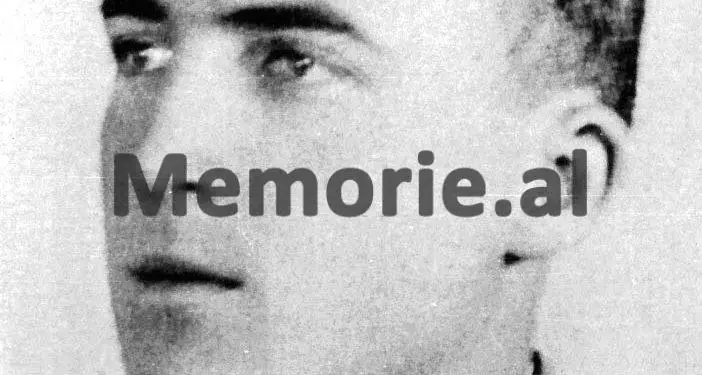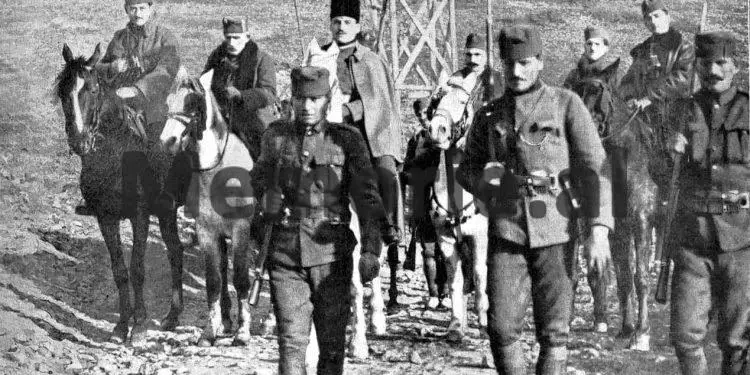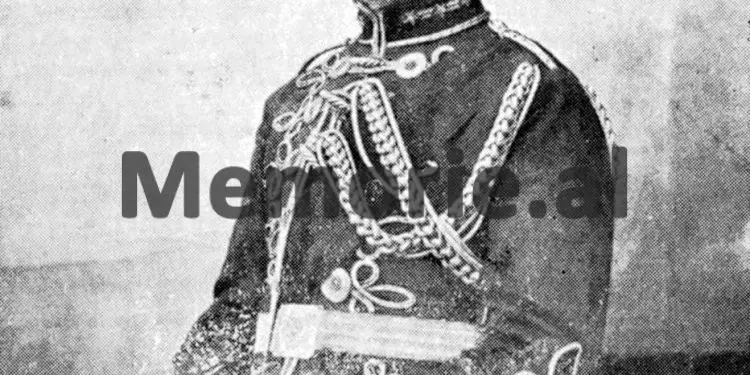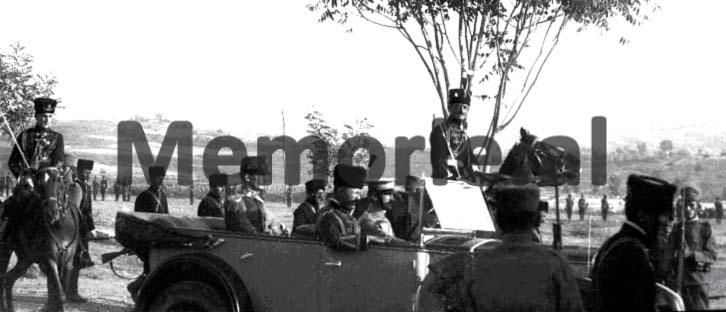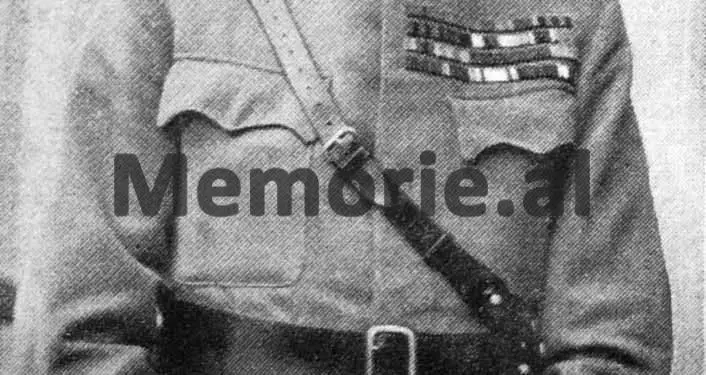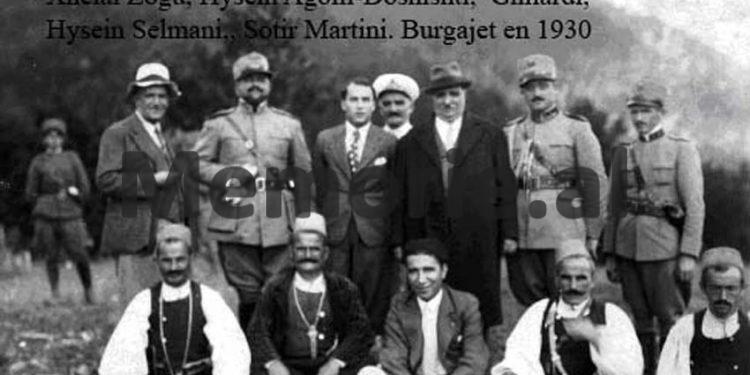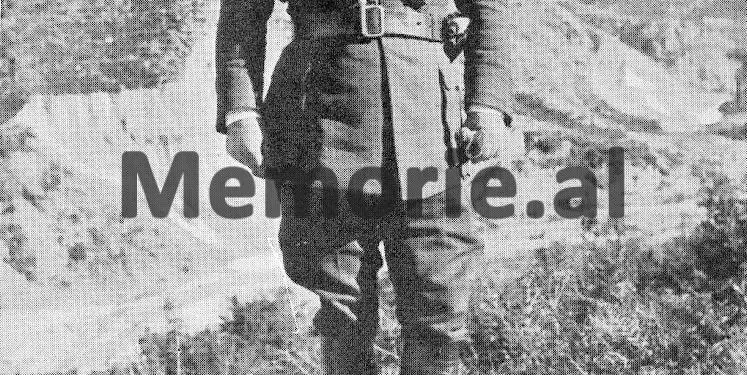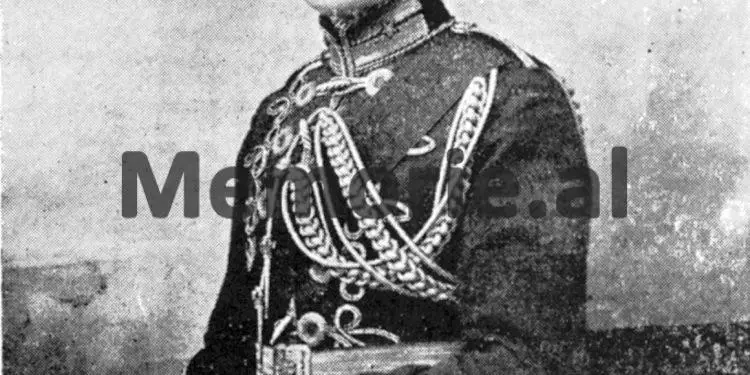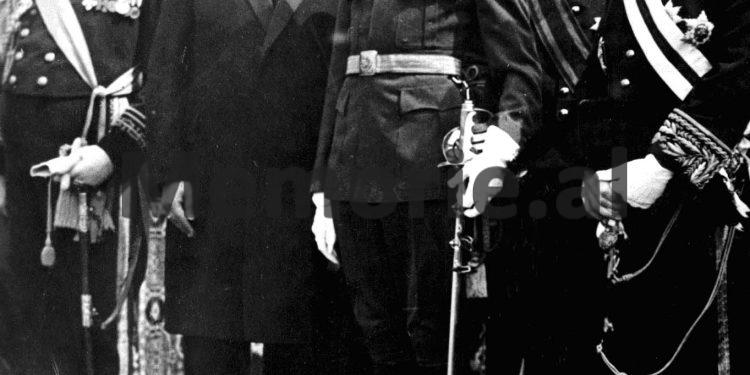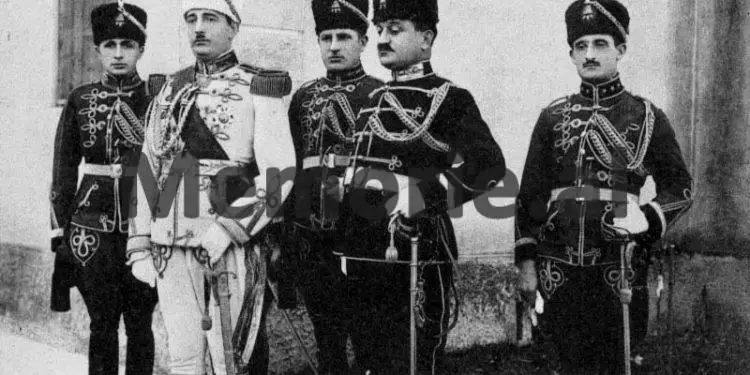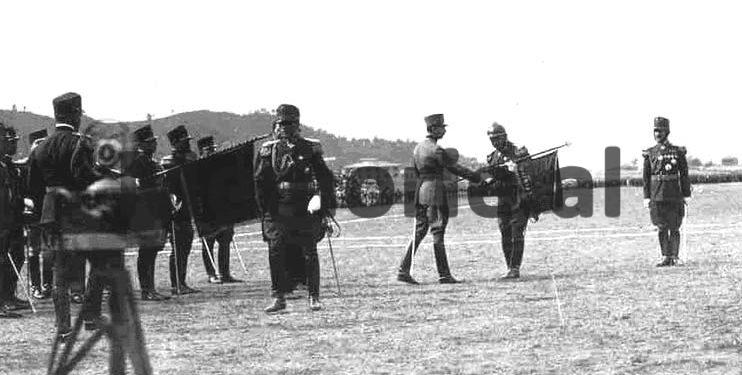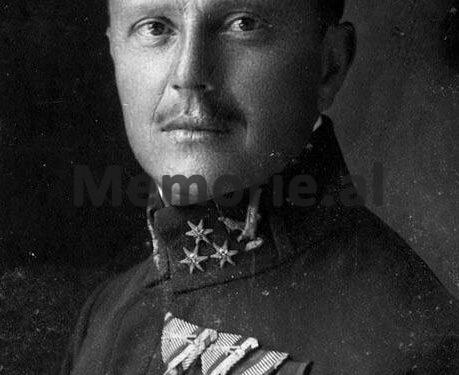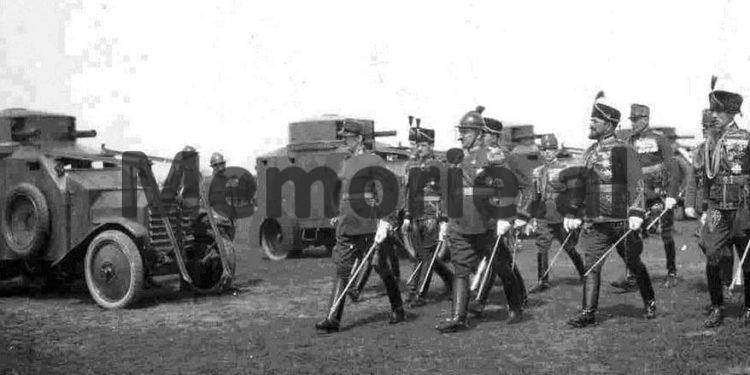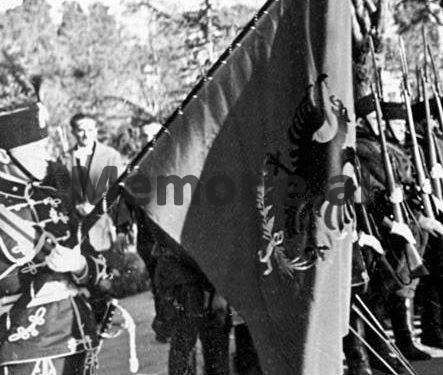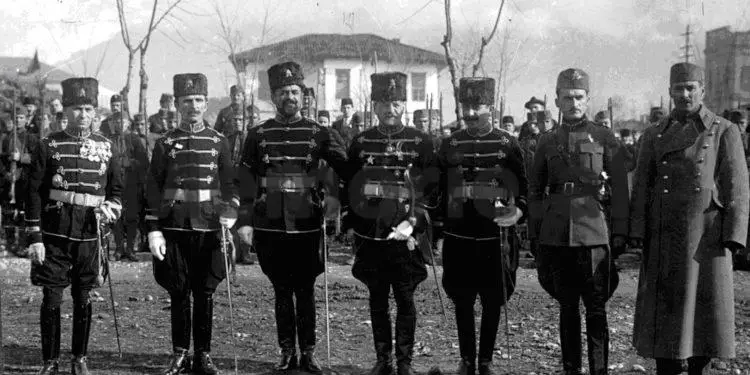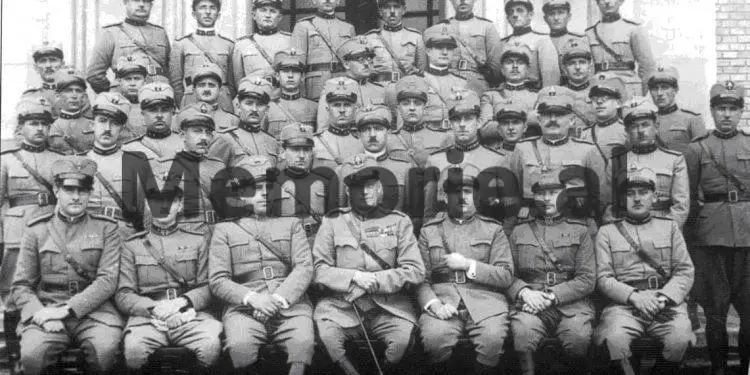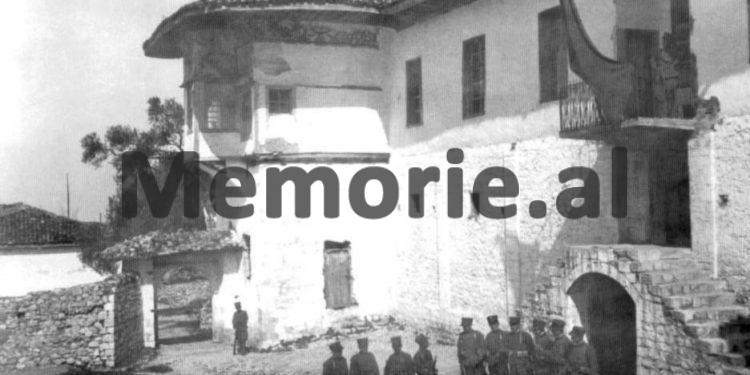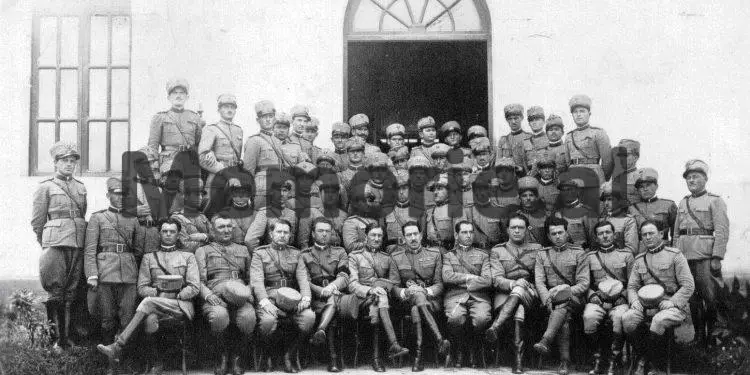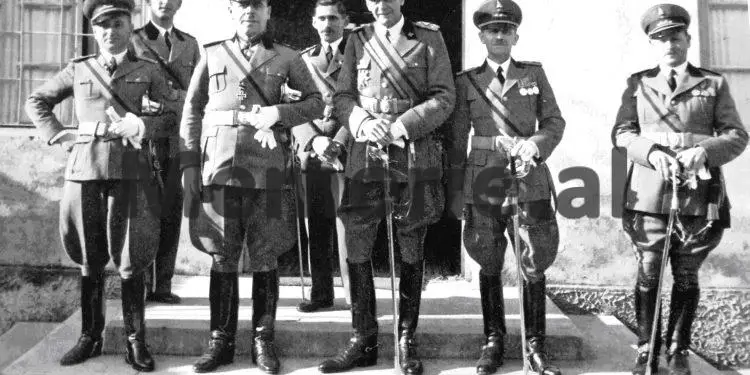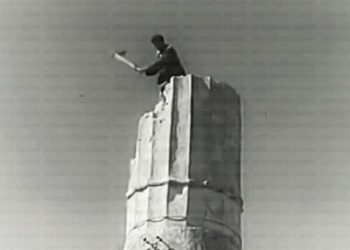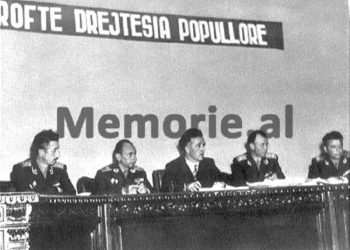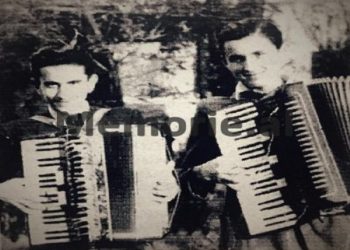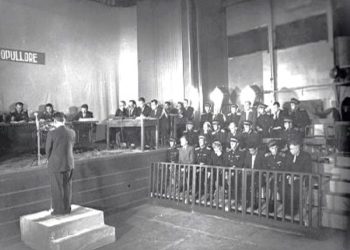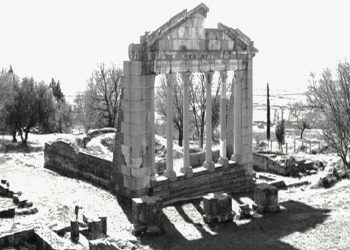Dashnor Kaloçi
Memorie.al publishes the unknown story of the creation of the weapon of the Gendarmerie and the Guard of the Albanian state, which have their origins in November 1912, when Ismail Qemali asked Isa Boletini to give him two strong sons from those he had taken with him from Kosovo to accompany him to Vlora, to guard the door of his office, which was also the first seat of the newly formed Albanian government. How the Albanian Gendarmerie disbanded after the fall of Ismail Qemali’s government and its attributes were taken over by foreign troops, mainly Dutch, led by Colonel Thomson, who were sent by the Great Powers to establish and maintain order and security in Albania. occupied by some foreign armies. How the weapon of the Albanian Gendarmerie and the Guard was reorganized, from the period of the Lushnja Congress until April 1939, when Albania was militarily attacked by fascist Italy, who were the ones who led it, and how effective it was in the last year when did it cease to exist?!
108 years ago, that distant end of November 1912, when Ismail Qemali asked Isa Boletini to find two loyal boys from the Kosovars who had accompanied him to Vlora, to guard them at the door of office of the newly formed government, he had never thought that with that action, he was inadvertently sanctioning the foundations of the weapon of the future Gendarmerie of the Albanian state and its Guard. Thus, Isa Boletini, while ordering those two young men from Kosovo, named Ahmet Llapi and Halim Bajgora, to keep the first prime minister of the newly formed government, also never thought that he had given himself the attributes of the Commander of Guard, in the first government of the Albanian state. How did the creation of the Albanian Gendarmerie and the National Guard continue, and who were the people who commanded them?
The origin of the creation of the Gendarmerie weapon
The beginning of the creation of the Albanian Gendarmerie weapon, although it started with those young boys, mainly Kosovars, who were under the command of Isa Boletini, did not have a long life. It disintegrated with the fall of the government, after the resignation of the first Albanian Prime Minister, Ismail Qemali! At the end of 1913 until January 1920 when the Congress of Lushnja was held, although there was a Gendarmerie weapon, we cannot talk about a regular Gendarmerie of the Albanian state, as Albania at that time was occupied from the neighbors and was held under the administration of the Great Powers, who were appointed by the League of Nations to maintain some stability from the internal unrest that had engulfed the whole country and from the danger posed to them from outside, by the Greek armies in the South and the Serbo-Montenegrin ones in the North. In this context, it was the arrival in Albania of the Dutch colonel, Thomson, who was killed in Durrës, in an attempt to establish a troubled order, from the internal conflicts that had plagued almost the entire country.
The first schools of the Gendarmerie
For the first time in Albania, military schools, or more precisely courses for the training of gendarmes were opened in 1919, in Vlora and Gjirokastra. These courses, in fact, had begun to take place before 1919, when in Tirana, under the auspices of the Austro-Hungarian military, began the preparation of soldiers and officers who would join the gendarmerie, which had the task maintaining order and tranquility, not only in the main cities, but even in the villages of the most remote municipalities of the country. These courses took place under the command of Major Ismail Haki Kuçi (originally from the village of Kuçi in Vlora) and English Colonel Ridolf. At that time, in those courses, which were considered as the first school of the Albanian Gendarmerie, a large number of Albanian officers who had studied abroad, such as in Turkey and Austria, gathered, who were also the first professors of that school. After that, in 1921, another school was opened in Tirana, which began to train non-commissioned officers and soldiers for the regular army troops. A year later, in 1922, this school was transferred from Tirana to Vlora and its destination returned only for the training of gendarmes. This school in the city of Vlora functioned until June 1924, when the June Uprising took place, which overthrew the government of Shefqet Vërlac by force of arms, in which Ahmet Zogu held the post of Minister of Interior.
Gendarmerie training courses after 1925
With the return of Ahmet Zogu to power in 1925, the Command Area was created and in each of these areas, a course for the training of gendarmes was opened. In May 1926, another gendarmerie school was opened in the city of Shkodra, which would be followed four years later by the school that was opened in Durrës. By order of King Zog, these schools were closed on May 1, 1935, and transferred to the town of Burrell. The transfer of the gendarmerie school to the town of Burrel was done by King Zog, due to the numerous requests to serve in this weapon, coming from the provinces of Mat, Mirdita and Dibra. From this school, which remained open until 1939, when the Italian fascist aggression against Albania took place, every year a large number of gendarmes came out, who were then scattered throughout the country. Likewise, in addition to various schools and courses for the training of gendarmes, a large number of officers of that weapon were sent abroad to both Italy and Austria where they graduated from military academies. In 1936, the Albanian Gendarmerie had one colonel, 4 lieutenants / colonels, 8 majors, 16 first captains, 32 second captains, 40 lieutenants and 43 lieutenants, having a total of 144 officers in that weapon, with a general budget, of 3,250. 000 gold francs.
Establishment of the Special Battalion
After the Congress of Lushnja, with the re-creation of the weapon of the Albanian Gendarmerie, it was decided to create a Special Battalion, which would have as its main task, establishing order and calm in cases of riots and uprisings against the government. This battalion that was placed under the command of Major Preng Jakut (from the village of Pllana in Lezha) who was educated in a military school in Vienna, at that time was called the Walking Battalion, by its very nature, from where it went everywhere, undertaking punitive operations, in those provinces where there were riots and riots and uprisings against the government. Under the command of Major Jakut, this Special Battalion which was part of the Albanian Gendarmerie, managed to establish order and calm and suppress some uprisings against the government, such as those esadists in Durrës, Shijak and Tirana, Bajram Curri in the castle of Preza, (when he attacked Tirana) Gjonmarkajve in Mirdita, the uprising of Gashi and Krasniqe, etc. Although Major Preng Jaku died accidentally in June 1923, from a bomb blast (catching fish in the Valbona River in Tropoja), the Mobile (Special) Battalion continued its activity, in accordance with the mandate for which it was created.
Gendarmerie Commanders
After the Congress of Lushnja, Meleq Frashëri was appointed head of the Albanian Gendarmerie, who held this post until March 1922, when he was killed in Kamza, by the attacks of the rebel forces of Halit Lleshi, Dan Canit, Elez Isufi and Colonel Bajram Curri, who from different directions and with numerous forces, attacked Tirana, with the aim of overthrowing the government. After this attack that started in the afternoon, a fierce battle took place which continued all night, through the streets and government buildings of the capital, between the rebel forces commanded by Elez Isufi and those of the government Gendarmerie since the assassination of the commander of Meleq Frashëri, was commanded by the Minister of Interior Ahmet Zogu. After two days and two nights of war that terrified the entire population of the capital, which was locked in houses without knowing what was happening, Ahmet Zogu managed to repel the rebel forces of Elez Isufi and Bajram Curri and established peace in Tirana. After that, all the ministers and deputies who were hiding in the forests of Qafë-Krraba returned to Tirana. With the intervention of the British ambassador Eyres who was accredited in Tirana, Zogu forgave Elez Isufi and left him free to return to Debar, giving him a large amount of gold with him. After the assassination of Commander-in-Chief Meleq Frashëri, a year later in June 1924, in an attempt by fanolist forces led by Colonel Rexhep Shala, who attacked Shkodra, the gendarmerie commander of that city, Captain Ferid Frashëri, was killed. In 1923, the place of Meleq Frashëri, at the head of the Albanian Gendarmerie, was taken by Major Banush Hamdiu, who remained in that post until 1924, when Ahmet Zogu appointed Major Aqif Përmeti. A year later, in 1925, Major Përmeti left the post to Lieutenant Colonel Ramiz Dibra, who remained in charge of the Gendarmerie until 1927, when he left the post to Lieutenant Colonel Kasem Sejdini.
The King’s guard and bodyguard
At the beginning of 1925, when Ahmet Zogu returned to power, he paid special attention to the re-creation of the Republic Guard, which with the proclamation of the Monarchy was called the Royal Guard. At the head of this Guard, which consisted mainly of mountaineers coming from the northern provinces, such as Mat, Dibër and Mirditë, Zogu appointed as commander Major Hysen Selmani, who was a close man of his, who was known as Zogu’s nephew. In addition to recreating the Guard, Zogu also chose his bodyguard, then known as the Presidential’s aide. Zogu’s first adjutant was Lieutenant Colonel Zef Serreqi, (Zogu considered him the most loyal man) who came from a well-known family from Shkodra and had studied in Austria. Major Llesh Topallaj was appointed as the second adjutant. After Topallaj, Osman Gazepi, originally from Leskovik, who had been Esat Pasha’s bodyguard when he was a member of the Turkish Parliament, and Captain Allaman Çupi, who was from Mati, Zogu’s birthplace, were also appointed to Zogu’s’s office. All of them, with the exception of Topallaj who was killed in 1932 in the Vienna assassination, served King Zog faithfully until the end.
Reorganization of the Gendarmerie
With the proclamation of the Monarchy in 1928, the Albanian Gendarmerie was organized in the range of counties, districts and post-commands in accordance with the geographical distribution of the country’s population. After this year, the Gendarmerie weapon, (or King’s gills, as they were otherwise known, because of the red collars), was given great importance, and a large number of command post were built, to the farthest corners of the country. In this regard, one of the newspapers of that time, which echoed its reorganization, wrote, among other things: “The lands, even the farthest from the homeland, were enriched with a land of buildings, in which the soldier laid his body and from which he departed when asked for the task of restoring peace and order, where they were vulnerable.The traveler who once feared our mountains, passes today freely and safely and in the most abandoned capes, as there is almost no refuge in Albania If in the early days, the post-command buildings of this weapon did not present even the most basic comfort, the regime of King Zog, gave you a land of peaceful and beautiful buildings for him. all the military who work there. ”
In 1938, the Albanian Gendarmerie had 3643 effectives
In 1928 the total number of gendarmes throughout Albania reached about 3000 people. This number increased from year to year with about 100 gendarmes and in 1938 their number reached 3643 people, including the city police, as it was then called the municipal police. The Albanian Gendarmerie since its creation, remained loyal to the end for the role for which it was created, correctly maintaining the constitutional order. Likewise, during the efforts to overthrow the Monarchical regime, such as the “Vlora Movement” in 1931, the “Fier Uprising” in 1935, the “Officers’ Uprising” led by the Toto brothers, etc., the Albanian Gendarmerie played a leading role for their suppression. She remained so loyal to the King that in the fascist aggression of April 7, 1939 in Durrës, Zogu appointed as commander of the National Defense, the gendarmerie officer Abaz Kupin.
British General in the Gendarmerie
In 1933, King Zog appointed at the head of the Albanian Gendarmerie, Lieutenant Colonel Shefki Shatku, who was one of the most trained officers of that weapon. In the same year, King Zog summoned to the aid of the Gendarmerie, the English general Percy, who made a great contribution to the strengthening and consolidation of that weapon. The arrival of the English general, made the weapon of the Royal Gendarmerie to be put on the basis of new relevant laws and regulations that were approved by the government. So that year, the Albanian parliament approved the new law on the gendarmerie weapon, which was distributed through bulletins to the bodies of that weapon, in all regions and prefectures. After the proclamation of the Monarchy, in 1928, King Zog ordered the reorganization of the Gendarmerie, based on a bill that had been submitted by the government. After that, the Gendarmerie began to reorganize, changing its previous form into battalions, companies, platoon and post. In 1930, the battalions were suppressed and the royal gendarmerie returned to its old form, which remained unchanged until 1939 when the Italian occupation finally overthrew the Monarchical regime of King Zog, and with it the Gendarmerie of the Albanian state. ./Memorie.al




